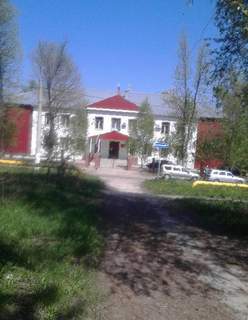How to independently build a sequence for yoga practice? So that the practice of yoga does not turn into physical education with low efficiency, it is advisable to take into account the principles of constructing classes that
How to independently build a sequence for yoga practice?
So that the practice of yoga does not turn into physical education with low efficiency, it is desirable to take into account the principles of building classes that allow you to achieve certain goals.
Principles of building a home yoga practice
Task: sequentially activate all the chakras, moving from the bottom up and affecting the corresponding primary elements (mahabhuta *) – from gross to subtle matter. This principle of building a lesson allows you to achieve the necessary state for the harmonious practice of meditation.
*Mahabhuta (Skt. महाभूत, mahā-bhūta IAST, “primary element”) is the five great or universal elements in Hinduism: ether, air, fire, water and earth.
| CHAKRAS | MAHABHUTS |
|---|---|
| Muladhara | Earth |
| Swadhisthana | Water |
| Manipura | Fire |
| Anahata | Air |
| Vishuddha | Ether |
| Ajna | Immaterial, ajna is vibration, sound OM |
| Sahasrara | Also immaterial, sahasrara is light |
Stages of practice
- Setting up for practice. Conscious breathing.
- Preparation for the practice of asanas: warm-up (marma-vyayama), abdominal manipulations (kapalabhati, uddiyana bandha, agnisara dhauti, nauli).
- standing posesis work with Muladhara chakra, that is, with the primary element Earth. Through work with balances, we interact with the Earth. For example, Tadasana – Urdhva Hastasana – Uttanasana – Ardha Uttanasana – Utkatasana – Virabhadrasana II – Ardha Chandrasana, etc.
- Sitting postures — stimulate Swadhisthana chakra, that is, they affect the primary element Water. In addition, every dynamic link (vinyasa) and forward bends work with Water. Emphasis on poses that open the hips. For example, Baddhakonasana – Agnistambhasana – Upavista Konasana, etc. Compensate for the opening of the hips with a symmetrical pose with the hips turned inward, such as Gomukhasana.
- Twisting, work with the press — stimulation Manipura chakras, that is, the impact on the primary element Fire. For example, Navasana – Ardha Navasana – Marichiasana II – Urdhva Chaturanga, etc. Also, this block can be supplemented with emphasis on the hands: Bakasana, Kaudinyasana, etc.
- Backbends– stimulate the Anahata chakra, that is, they affect the primary element Air. For example, Shalabhasana – Bhujangasana – Ushtrasana – Setu Bandha Sarvangasana, etc. This block ends with compensation: forward bends, anti-deflections, Halasana, lying twists.
- Inverted poses– stimulate Vishuddha chakra, that is, they affect the primary element Ether. For example, Viparita Karani – Halasana – Salamba Sarvangasana – Pincha Mayurasana, etc. The Forward Bend and Downward Dog perform the same function and can be used as an alternative for people who have contraindications to the practice of inverted postures.
- Savasana – stimulate Ajna chakra, that is, they affect the primary element Ether. Working with visualization, that is, with the third eye.
- Meditation – stimulate Sahasrara chakra, that is, they affect the primary element Ether. The development of the inner light.
*According to the materials of the seminar by Ruslan Kleitman (USA) in the YOGA ROOM studio msk.
Raspberry banana jelly with agar agar
How fun and useful to spend a summer morning with a child? Of course, prepare healthy and beautiful sweets from fresh berries! Me .

2.08.2020
Raspberry banana jelly with agar agar
How fun and useful to spend a summer morning with a child? Of course, prepare healthy and beautiful sweets from fresh berries!
It really upsets me that the modern world is very aggressive towards children. At the same time, aggression is often hidden: we practically do not have a choice of healthy and healthy products for babies. The abundance of advertising of pseudo-children's goods forms wrong values and addictions, which you have to fight with all your life or disentangle their unpleasant consequences … In short, it is almost impossible to go and buy something tasty and harmless to the child. Therefore, we invent and prepare on our own what pleases children and thereby makes parents happy.
To prepare fruit jelly, we need silicone cookie molds or flexible ice molds, a playful mood and the following products: 400 fresh raspberries, 2 bananas, 1/3 Jerusalem artichoke syrup, 4 teaspoons of agar-agar, vanilla extract (to taste).
- Puree the raspberries with a blender, and then get rid of the seeds, filtering through cheesecloth or a sieve.
- Whisk banana, Jerusalem artichoke syrup and vanilla extract with a blender.
- Mix raspberry and banana puree. Dilute half a glass of puree with water at room temperature, add agar-agar and mix thoroughly. We let it brew for 20 minutes.
- Pour the puree with agar into a saucepan, bring to a boil, then add the rest of the raspberry-banana puree and keep on fire for a couple of minutes, stirring constantly.
- Pour into molds and refrigerate until set. Our jelly was ready in 10-15 minutes!
Pour the jelly into molds with mom, and then clean up the rest of the mashed potatoes in the pan with a large spoon – what could be better ?! In the meantime, the jelly hardens in the refrigerator, you can wash the dishes with the baby. His happiness knows no bounds!
Baked vegetables with bulgur and quinoa
A hearty and non-trivial lunch when you want to diversify the usual ways of cooking vegetables. Oven baked vegetables are a good option for those.

2.08.2020
Baked vegetables with bulgur and quinoa
A hearty and non-trivial lunch when you want to diversify the usual ways of cooking vegetables.
Roasted vegetables are a good option for those who are trying to stick to a healthy diet. They go well with cereals, but can also be an independent dish.
We will need eggplant, tomatoes, onions, bell pepper. We lubricate the vegetables with oil, puncture the eggplant with a knife in several places and send to the oven (aerogril) preheated to 180 degrees for 40 minutes. Cooking vegetables until black tan on the peppers appear.

Then we must get rid of the skin, and to make it easier to do, we place tomatoes and peppers in a plastic bag for at least 5-10 minutes. In the meantime, we get the pulp pulia and grind it with a knife. Finely cut the onion. In order not to burn your hands, the peppers can be washed with cold water, then peeled from the skin and seeds, cut the pulp in small cubes. Tomatoes peeled from the skin are also finely chopped. Mix all vegetables and add finely chopped greens with garlic. Spices to taste.
Bulgur and Kinoa are perfectly combined with these vegetables – both together and separately. It is convenient to cook them together, because they cook for only 10 minutes. You can season the cereal with GHO oil and serve with vegetables. A piquant taste and unusual texture. Lunch is ready!
Strong and elastic muscles
Is it possible to strengthen the muscles by stretching? We are trying to figure out the example of Baddha Konasana. And eat a fish and do not climb into the water.

2.08.2020
Strong and elastic muscles
Is it possible to strengthen the muscles by stretching? We are trying to figure out the example of Baddha Konasana.
And eat a fish and do not climb into the water
It is common for a person to want everything at once, preferably with the least expenditure of strength. And this is not bad – this is how progress moves. However, our desires can hardly change the laws of nature and physiology in particular.

Fundamentals of physical education
If stretching is about flexibility, then muscle strengthening is about strength. Here we are talking about the development of different physical qualities. We don’t think that juggling for three in a row, that is, working on dexterity, Hanumanasan is being improved at the same time (read: flexibility)?
Nevertheless, in yoga, stretching and tension, which inevitably occurs in the process of strengthening the muscles, steps in the leg.

Tension as a stretch reaction
Suppose we are working on stretching the inner surface of the thigh and perform Baddha Konasan. What's happening?
We bent our legs without much difficulty, captured the feet and connected them together. They pulled the feet to the crotch (maybe not so elegant) and began to lower their knees to the floor … And then difficulties arise. The back is rounded, the face tenses, the legs groan in pain. The stretched muscle is frightened to return its original length and resists our crazy idea to easily and at ease to lower his knees to the floor. There is a tension as a tensile reaction. If you keep the muscle stretched for a long time, its resistance will gradually weaken. The voltage will go even faster if you recall the key skill in yoga – conscious muscle relaxation through breathing observation. In asana, dressing is permissible to hold the position.The rest of the muscles should be relaxed, especially those that are being stretched.
Take a deep breath to release tension. Exhale – increased the pressure on the legs and, using the force of gravity, lowered the knees a little lower. Sounds logical, but how to endure this pain?!
When PIR, then stretching
We will help … Tension! More precisely, the technique of post-isometric relaxation (PIR). Alternating tension and relaxation of the same muscle groups improves the results of stretching.
Let's go back to the butterfly pose. We press our palms on our knees, pushing them to the floor, and at the same time we provide resistance with our feet, strongly straining the inner surfaces of the thighs. We fix the position of 10-15 counts, and then, in complete relaxation, swing our knees up and down, allowing them to drop to a comfortable level. Then, with an exhalation, pressing with the elbows on the area above the knees, we try to deepen the position of Baddha Konasana. After doing 3-5 such alternations of tension and relaxation, you will notice a significant improvement in the extension of the inner thighs, and at the same time strengthen various groups of adductor muscles.
Open your pelvis!
Throwing a leg over your head – is it possible for everyone? And is it necessary? What are the secrets of mastering the eka pada sirshasana.

2.08.2020
Open your pelvis!
Throwing a leg over your head – is it possible for everyone? And is it necessary? What are the secrets of mastering the eka pada sirshasana and related asanas? How to understand if the body is ready for such tasks? Looking for answers to all these questions…
This is how a person works, which is most influenced by what he sees. And in the practice of asanas, this manifests itself especially strongly: I liked the pose, I wanted to twist in the same way, I began to storm another spectacular external form … It is clear that such logic is not entirely correct, but it is better than sitting still. And over time, motivation can change! Who has not been inspired by, say, the foot behind the head (eka pada sirshasana) and the numerous asanas based on this fundamental position?
I have always been fascinated by the ease and fluidity of the American Ashtanga yoga teacher Kino McGregor, with which she performs the most difficult variations of asanas with a leg behind her head. For example, Kapilasana is the pose of the sage Kapila.

Or Kala Bhairavasana – the pose of the god Shiva.

And also Durvasana – the pose of the sage Durvasa …

All photos from kinoyoga.com
Effective, right? But for many years, I didn’t even try to try to move in this direction because of some obscurations and fears, I guess. And when I started, I encountered difficulties already in Supta Kurmasan (pose of a sleeping turtle), and from great diligence or stupidity forced the development of this pose until I hurt my back …
The excitement subsided, and the understanding came that everything has its time, and most importantly – competent development.
Based on postures such as
- Eka Pada Sirshasana;
- Dwi Pada Sirshasana;
- Yoga Dandasana;
- Yoga Nidrasana etc.
lies the disclosure of the hip joints.
But the very expression “opening the hip joints” is very symbolic. Rather, here we are talking about increasing the mobility of the joint due to the study of the muscles, fascia and ligaments adjacent to it. The hip joint is located deep in the muscle masses of considerable volume and is supported by a dense capsule and powerful ligaments. Moreover, in complex asanas with abduction of the leg behind the head, the intercostal muscles and back muscles are included. And all these tissues require elaboration and stretching.
The shape and structure of the hip joint provide it with exceptional mobility in at least 6 directions of movement and three planes. For example, in squats or pulling the knee to the body, bending. When the dancer takes her straight leg high back – the “arabesque” pose, her thigh makes stretching. During the performance of Virasana, our femurs rotate on their longitudinal axis, performing inner turn. Also exists and outer turn, which is essential for taking the lotus position without harming the knees and ankles. And during Uttanasana there is a movement called anteversion, during which the ilium moves around the femur … This list can be continued for a long time – the bottom line is that we can fight for years on “opening the pelvis”, but at the same time miss one or more directions of joint mobility, thereby preventing the development of cherished asanas.
In addition, there are individual features of the structure of the hip (in particular, the angle of the femoral neck), which can limit the mobility of the joint in one direction or another. In this case, a person can, for example, easily perform a longitudinal split, but have difficulty with Eka Pada Dandasana. And here it is worth accepting yourself the way nature created us, and working on other weaknesses. Luckily, you can always find them.
But is it possible to indirectly or directly contribute to an increase in the mobility of the hip joints? There are several nuances.
- Nutrition. It is worth reducing the consumption of salty foods and spices – what retains water in the body. It is good to use khichari with ghee. A large amount of protein food impairs mobility, so a vegetarian diet can help open up the hip joints. However, it is worth understanding the nature of this relationship in order to prevent undesirable health consequences from a lack of knowledge. Here is a commentary by Dmitry Belyaev, a certified teacher of hatha yoga, a family doctor:
“Indeed, many have noticed that vegetarianism helps them improve flexibility, but the mechanism for this progress is the loss of muscle mass and strength, as well as the weakening of the ligamentous apparatus of the joints. As a result, tissues become more pliable when stretched, which significantly increases the risk of injury.Also due to insufficiency of building material, i.e. Squirrel, the processes of regeneration and recovery worsen, which in the future again leads to injury.
However, excessive protein consumption with a lack of power load can lead to undesirable consequences, for example, to layering of uric acid crystals in the joints.
Thus, you should pay attention to the balance of the diet.
In addition, it is worth remembering that the loss of muscle mass with a lack of protein can also lead to arthritis, since the joint, subjected to intensive load, even if it feels like moderate, needs good “lubrication”. The role of this lubrication is played by a synovial fluid, which is a transudate of blood from the surrounding joint of muscle tissue, and the development of the vascular network directly depends on the muscle mass, that is, the less, the worse the power of the joints, and the more it is better. Therefore, it should be ensured that the body mass index is within normal limits. ”
- Reducing body weight. The smaller the load on the joints, the easier it is to work with their mobility, but we remember the consequences of fanaticism and extremes and are careful about the body.
- Rubbing oils into the joints It can give a good warming effect. In India, they are advised to “oxide” the body with coconut oil, but it has cooling properties, therefore, in our climatic conditions (especially in winter) it is better to use sesame or mustard oil.
- Regular physical activity (two to three times a week in an intensive, that is, developing mode) with competent breathing and the execution of bandh.
- Statics and tension before stretching. To stretch the muscles, good warming is necessary, and it is perfectly achieved due to the principles of postisometric relaxation (feast): the muscles are subjected to isothermal contraction (the muscles are reduced for a certain time without changing the length) and then stretching with subsequent relaxation.
- Working with breathing. During practice, it is worth focusing on lengthening inhalation and exhalation, and the longer exhale, the more chances to delve into stretching.
How to check if the body is ready to start the development of complex poses with the involvement of hip joints? Exist Assanas-indicators Readiness for this work, and without them, it is unsafe to move on. So, in the arsenal there must be:
- Uttanasana;
- PAVISTACONASANA;
- Badhaconasana;
- Agnistambhasana.
It is also advisable to remember the consistent and timely development of poses. So, without Sudt Kurmasana, it makes no sense to make the Ec Pad Shirshasan, and without the last one, it makes no sense to make the droit of Pada Shirshasan and so on.
True, it is worth making a reservation here. Some practitioners are able to take two legs behind their heads, without having the ECA of the Shirshasana Pad: this is explained by the fact that they focus on the stretching of the back muscles and spinal stretching, and not due to the opening of the pelvis.
One way or another, but you should try and engage in without fanaticism, and everything will come in its time! Checked on yourself.
* Thank you to my teacher, Dmitry Belyaev, for participating in the preparation of this material.
Practice for live music Animus Project
Engage in yoga to the music or without? Does a musical accompaniment interfere with the unidirement of the mind? You can argue and theorize … photos of Makarenko Alexey but.
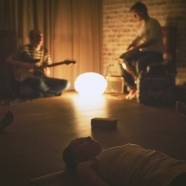
2.08.2020
Practice for live music Animus Project
Engage in yoga to the music or without? Does a musical accompaniment interfere with the unidirement of the mind? You can argue and theorize …
Photos Makarenko Alexey
But at the exit, the result of practice and personal satisfaction are important. This was my first experience in living music, and the effect exceeded expectation! I managed to plunge into practice and relax deeply.
Yoga in hammocks, or how to find wings
In the Moscow Yogaroom yoga studio, a presentation of a new class was held – “Yoga in the air”, or rather in a hammock. Ulyana Agalakova and.
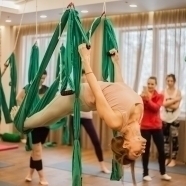
2.08.2020
Yoga in hammocks, or how to find wings
In the Moscow Yogaroom yoga studio, a presentation of a new class was held – “Yoga in the air”, or rather in a hammock. Ulyana Agalakova and Anastasia Misharina – certified instructors of this new direction – introduced guests to the basic elements and the most interesting capabilities of air yoga. How and when did the idea arise to change the rug for hammock and what is the benefit of this?
Photos by Dmitry Muzalevsky
The desire to take off, breaking away from the earth, always shocked the mind of man. Recall at least the textbook plot of the ancient Greek myth about Ikar. We conquer the sky in our dreams and children's fantasies, and sometimes these fantasies inspire ineradicable dreamers to create amazing devices that give a feeling of flight and wings behind their backs. Christopher Harrison is one of them. During his life, he managed to know the work with his body in various fields, becoming the world champion in sports gymnastics, professional dancer Broadway and air acrobat. He discovered that among the artists are full of people seeking to overcome the power of earthly attraction, and created the Antigravity® project in the early 1990s. The cornerstone of the project is a special hammock invented by Christopher, which is attached to the ceiling. Today, Antigravity® has a lot of directions, including Antigravity Yoga – a program developed for a wide audience.

What does yoga have to do with it, you ask. The fact is that Harrison empirically noticed a wide restoration potential for working in a hammock. Since many elements are made upside down, the effect of inverted asanas is turned on, that is, the mechanisms of self -renewal, deep relaxation and accumulation of forces are launched. The hammock supports the body in limbo, which helps to remove the load from the spine and straighten it without unnecessary effort. Having adopted the richest yoga arsenal, Harrison changed the rug practitioners to Gamak-Antigravity and tore us away from the ground.

There are more and more adherents of the new method of working with the body every day. Anti-gravity yoga has already conquered dozens of countries, not bypassing Russia. As it usually happens, once in a new fertile soil, the original method is transformed and supplemented, and in our country “Yoga in the Air” has been developed thanks to the guidance of Svetlana Angel.
“The YogaRoom studio presents the “Yoga in the air” direction, it is also called “AirYoga”, Anastasia Misharina comments. — They differ from AntiGravity Yoga in that “Yoga in the air” is, first of all, a competent combination of yoga asanas, acrobatic elements, relaxation and meditative poses in a hammock. AntiGravity, on the other hand, is positioned as a yoga fitness direction, with a greater share of acrobatic elements.”

You can call it whatever you like – this is the business of marketers. But how justified is the word “yoga” in all these cases? Does the hammock really contribute to the goals that are set for the traditional practice of asanas?
“Yoga in the air” is a unique dimension of yoga practice, in which the student is completely focused on the performance of asanas, which quite naturally causes a stop in the thought process. And this, as everyone knows, is one of the main goals of yoga. Unique decompression positions help relieve stress and improve physical well-being, and “floating” Shavasana allows you to experience conscious relaxation in a new way, ”says Anastasia.

Prior to its launch, elements of aerial yoga were tested for several years, so classes are safe and accessible to almost everyone – with the exception of some medical contraindications. The only condition is the correct technique of movements, which should be taken care of by a certified instructor, and high-quality equipment. Both can be found in one place – in the YogaRoom studio.
Anastasia Misharina, a teacher of Yoga in the Air, explains how the safety of classes in hammocks is ensured: “Students need to be aware throughout the practice and follow all the instructions voiced by the teacher. Entry and exit from asanas is carried out sequentially, under the strict guidance of the teacher. Students must master complex and inverted asanas with a safety net. Throughout the practice, you need to listen to yourself, and the teacher should be informed about the appearance of uncomfortable sensations. In addition, the design of the hammock itself is important in ensuring safety. At YogaRoom, we use only the finest hammocks, which are high in cotton to help keep your body in contact with the hammock comfortably and prevent slipping out. The hammock is equipped with duralumin carabiners, which are known for their reliability, and the hammock canvas can withstand loads up to 160 kg.Following these simple rules will allow you to fully enjoy the practice of yoga in a hammock.”

Most students leave the hall after class in high spirits, with a smile and a feeling of lightness in the whole body. And confirmation of this is the positive feedback from those who attended the presentation of a new class in the YogaRoom studio.
Ivan Grosse, regular guest of the studio: “Emotions are only positive, the back is unloaded very well – it seems to be resting. Completely different sensations: what is difficult in ordinary yoga practice is perceived differently here, much easier and with pleasure – like in childhood! But the work of the body is very serious, although quite different. The difference is fundamental: you are standing on the ground or flying under the dome of the circus, roughly speaking. In other words, where in normal practice I feel the spine very sharply, here I have it relaxed, and I can concentrate on other muscle groups that I usually may not feel. I especially liked the inverted poses. Here you can draw an analogy with a handstand: not everyone can do it, and even stand in it for a long time, but here you can hang upside down for a long time, easily and naturally. Indeed, childhood is recalled, as a child climbed somewhere.
I will definitely go! I think this will not replace the usual practice of hatha yoga, but as an addition to the deep study of postures or muscle groups that receive less attention in ordinary practice, it is very useful.”

Ksyusha Makhankova, Hatha yoga teacher: “Yoga opened up for me from a new side – the sensations in the body are completely different, although you understand that the same muscles work and how they open up. The angle of perception changes, which is very useful for awareness and understanding of the processes taking place in the body. The hammock becomes your assistant and partner. Familiar asanas are performed in a new way, and this allows you to expand your consciousness and feel deeper at the level of the body. I was most impressed by the inverted poses – they help to understand how the asana should work when performed on the ground. Well, I liked all the relaxation in the hammock – this can be attributed to a separate type of meditation!”

Alexandra, yoga fan and expectant mother: “My arms are weak, but here I didn’t feel the load on them, and this allowed me to stretch my lower back well, open my chest, shoulder girdle. Very good! I am now experiencing severe compression in my lower back, and the hammock has helped me to relax well and stretch my spine. Mom is comfortable and pleasant, and the baby clearly likes it, he is calm – if it were otherwise, he would have responded a long time ago.
As they say, it is not harmful to dream – it is harmful not to dream. And here you can transform: it is not harmful to fly – it is harmful not to fly! We boldly grow wings and yogize in the air.
Jathara parivritasana kriya – hidden danger to the spine
Habitual asanas and kriyas can carry a hidden threat if performed without taking into account individual health characteristics. Let's see how to strengthen the side.

2.08.2020
Jathara parivritasana kriya – hidden danger to the spine
Habitual asanas and kriyas can carry a hidden threat if performed without taking into account individual health characteristics. Let's see how to strengthen the lateral abdominal muscles with Jathara parivritasana kriya without harming the spine.
The more you do, the more you understand the need for a competent and deliberate approach to practice. Individual characteristics can make significant adjustments to traditional, for many completely safe, postures and exercises. So, for example, an excellent warming and strengthening jathara parivritasana kriya hides some pitfalls that people with damaged or weakened intervertebral discs should be aware of.
Jathara parivritasana is nothing more than rotation of the torso in a prone position.
Starting position – lying on your back, legs raised vertically above the floor, arms spread apart. With an exhalation, the legs lower to the right, trying to be above the palm, and with an inhalation, the legs return to their original position. With the next exhalation, the same thing is repeated in the opposite direction.

10-20 repetitions followed by fixation for 20 seconds well strengthen the body due to the alternation of methods of contraction of the “wide”, or lateral, muscles of the body. When lowering and raising the legs, we act differently on the oblique abdominal muscles, thereby activating blood circulation and tissue drainage.
However, rotation of the body can be dangerous for the intervertebral discs, as they are subjected to strong twisting around themselves and powerful pressure. The pressure arises from the increased work of the press, which tries to implement or slow down the rotation of the torso with legs. People who have a weakened or damaged lumbar region of the back can correct the performance of jathara parivritasana kriya by reducing the intensity of the impact by the following methods.
- Bend your knees and pull your feet towards your pelvis – this will decrease the leg lever arm.
- Reduce the range of motion, that is, do not lower your legs too low.
- Extend your palms to the floor and control the movements of the torso with your hands. This position engages the back muscles and reduces the load on the discs.
- Pause for rest at the moment when the legs are above the body, and not above the floor.
I learned about these intricacies of working with the lateral abdominal muscles thanks to Blandin Calais-Germain, the author of very useful books on the anatomy of physical culture. No matter how ancient and proven knowledge may be, it will not be superfluous to correlate it with the achievements of modern scientific thought. And to yogic asanas, in my opinion, this also applies.
Let's practice harmlessly! 🙂
Start of regular classes!
Regular classes for beginners have started in the Moscow studio YogaRoom (yogaroom.ru)! Dear friends, with great joy I invite you to yoga classes in.
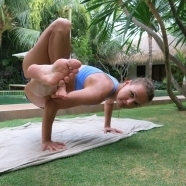
2.08.2020
Start of regular classes!
Regular classes for beginners have started in the Moscow studio YogaRoom (yogaroom.ru)!
Dear friends, it is with great pleasure that I invite you to yoga classes at the Yoga Room msk. We meet twice a week:
- Friday 17:00-18-45;
- Sunday 10:00-11:45.
Studio address: st. Trubetskaya, d. 10. Phones of administrators: +7 (985) 245-70-21; +7 (985) 625-09-57.
See you on the mat 😉
Tibetan lama, what do you eat?
About the food consumption culture of Tibetan lamas based on Peter Calder's book “The Eye of Revival…” Information always comes on time. Sometimes surprisingly read.
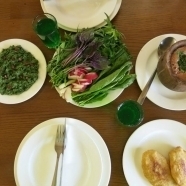
2.08.2020
Tibetan lama, what do you eat?
About the food consumption culture of Tibetan lamas based on the book by Peter Calder The Eye of Rebirth …
Information always comes on time. Sometimes a wonderfully read book turns out to be relevant in an unplanned conversation with an old friend or, say, a business partner. Recently, I often come across books that directly or indirectly reflect different concepts of healthy eating. Some of them relate to yoga, others are only close to it, others have nothing to do with the yogic lifestyle, but contain a lot of interesting information about proper eating habits. Since such knowledge has come to me, it is worth talking about it a little, and let's start with the most curious book by Peter Kelder “The eye of rebirth is an ancient secret of Tibetan lamas”, or rather the third chapter of it.
As the name already implies, we are talking about the nutrition of Tibetan lamas in the conditions of the monastic way of life. Of course, the habitat dictates the manner of behavior, including food, and in urban conditions it is extremely difficult to resist a sophisticated assortment of products that are far from natural and useful. Another thing is the ascetic life in the monastery, where primitive subsistence farming tools are used for life support, and food is not elevated to a cult and is not a means of relieving stress, satisfying hidden needs, or a pleasant pastime. However, some aspects of the culture of Tibetan lamas can be taken on board and make your diet a little cleaner … Or maybe you already follow some of them?
- Vegetarianism. Llamas do not consume any type of meat, but do not avoid dairy products and eggs in limited quantities, while raw yolks are preferred, and boiled protein is fed to chickens.
- Separate food. In one meal – one type of product.
- Coffee and tea. Lamas have nothing against these constant companions of modern man if a person tolerates them well, but there is one caveat: “Coffee or tea should not be mixed with dairy products, the addition of milk or cream turns them into poison …”
- All drinks other than drinking water are considered food.
- “When I eat, I am deaf and dumb” – this is exactly the pro lam. Slowness in the process of eating and chewing thoroughly is given such importance that there is even a rule: Solid food – drink, liquid food – eat.Remember the well-known advice to make 30 chewing movements before each swallow, as a result of which the food should drain into the esophagus?
The topic of food for people is almost one of the most popular, even maniacally obsessive. It seems to me that this is some kind of unhealthy phenomenon, which is especially pronounced in the predilection for photographing plates of food. Really, does the #world need to know what we are? Or is the food not worthy of such attention?
How to resume classes after childbirth, or three questions about postnatal yoga
Getting into pre-pregnancy clothes is an idea that visits almost every new mother. Often experiences about the return of former forms.
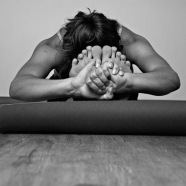
2.08.2020
How to resume classes after childbirth, or three questions about postnatal yoga
Getting into pre-pregnancy clothes is an idea that visits almost every new mother. Often, worries about the return of former forms after childbirth are disturbing long before a happy meeting with the baby. But are these experiences justified and is the task set correctly?
I agree, it's nice to throw away boring maternity jeans and get your favorite fitted dress out of the closet – let it inspire you to exploits. The only caveat, your child does not need feats of rapid weight loss, but a calm, preferably breastfeeding mother. The reserves that the body managed to make in 9 months will not go away immediately, especially when breastfeeding – the body will desperately hold on to NZ in the form of a fatty layer, especially in the abdomen, back and arms. But it is at this time that you can, without a twinge of conscience, allow yourself to be soft and comfortable for your beloved crumbs, and let the process of losing weight take its course. If you follow the diet of a nursing woman, and she ideally implies the exclusion of sugar, yeast, gluten, fatty, fried, etc., extra pounds will quietly go away on their own.
My sincere conviction is that it is necessary to change the perspective and look at your new body from the point of view of restoring lost strength and skills. In the first months, when the exhausted body departs from childbirth, an additional load falls on it in the form of a 3-5-kilogram child, and back pain often makes itself felt even in trained women. In addition to the back, the abdominal cavity requires attention, because pregnancy and childbirth often lead to displacement of internal organs. So it is banal for reasons of self-preservation, it is necessary to devote time to yourself and engage in strengthening the muscular corset.
When to start classes? Traditionally, in Western medical practice, a doctor examines a woman a month after giving birth and gives recommendations on acceptable physical activity. In Iyengar yoga, it is advised to refrain from practicing for the first 40 days, and in Ashtanga yoga there is a recommendation to return to the practice of the 1st series only after three months, but everything is very individual.In some cases,, for example, after a cesarean section or with diastasis, it should not be in a hurry – a careful and individual approach to classes is required here. In my case, the first month of the baby’s life due to a lack of time I could only dream of yoga. All that I managed to afford is a 15-minute articular gymnastics, sitting near the baby on the bed, and some pranayama before bedtime. But in the second month to spread the rug began to turn out more and more often, and after a few weeks I began to carefully remember the 1st series of Ashtanga Yoga.
How often and how long to study? This is a tricky question, especially for those who are used to a daily occupation before childbirth. Most likely at the beginning it will not always be possible to even bring the practice to a logical conclusion – the baby will distract, not to mention regularity. Let yourself a smooth return to your previous habits, learn to rejoice even 10 minutes spent alone with you during yoga. Always remember that even a short practice is better than its absence! Over time, the baby will grow up and will be happy to observe your “twisted” on the carpet, giving you more and more free time.
How not to harm yourself? In order for classes to bring pleasure, we put the principle of “do not harm” at the forefront and observe the basic principles of postnatal practice.
Exclude immediately after childbirth:
- exercises for the pelvic bottom (for at least 7 days);
- press exercises (first month);
- Brury manipulations: Uddiyan Bandha, Agnisara Dhauti, Nauli (first month);
- any compression load on the spine: running, jumping;
- Squats.
During the first month, they are performed:
- relaxation;
- pranayama;
- Joint gymnastics.
A month after childbirth (after cesarean section after 2-2.5 months)-a gradual return to practice, taking into account the following nuances:
- It is worth starting work with the muscles of the press with strengthening the lower section and oblique muscles, and only then move on to the rectus;
- strengthen the stomach with abdominal breathing, especially kapalabhati;
- To give preference to asanas that cover the hips (asanas with crossed legs: Garudasan, Gomukhasan, Sudt Parivrit Garudasan; rotation of the legs from the positions of lying, sitting and standing);
- avoid deep squats and provisions with wide -diluted legs like Istanbhasana (prevention of prolapse of internal organs);
- Carefully listen to the body and do not fulfill what causes internal resistance or doubt.
The main idea is not to force events and not be upset about the inevitable difficulties. The weakness in the body, the lost skills and the feeling of new themselves, honestly, are dumbfounded. But if you look at this as a chance to get acquainted with yoga and with yourself in the first place, then the recovery period turns into a fascinating study.
Yoga during pregnancy
For almost ten years of yoga, they have not shown me all the wealth that opened thanks to the practice for pregnant women … Being a pregnant only.
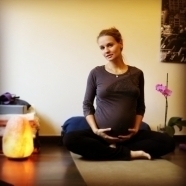
2.08.2020
Yoga during pregnancy
For almost ten years of yoga, they have not shown me all the wealth that opened thanks to the practice for pregnant women …
Being a “pregnant” only one thought of the future child, I sat comfortably under a spreading palm tree in one of the towns of Vietnam and sincerely, with a tireless desire to bring the treasured moment of pregnancy, meditated … Never before meditation was so absorbing. And effective. A month later, the baby settled under my heart, and the path of total changes began.
For almost ten years of yoga, they have not shown me all the wealth that was revealed thanks to the practice for pregnant women. It turned out that previous attempts to cleanse the practice of blurring desires, aspirations to improve the physical body were absolutely futile. And only thanks to the humble, soothing and revealing internal potential for pregnant women, I was able to catch, finally, what the calm mind and complete immersion in myself mean.
I visited the first lesson at 9 weeks of pregnancy and immediately ran into a mental obstacle. It was not easy to discard the established habits and preferences in practice, to impose a taboo on dynamism, intensity, complexity of the asanas – all that I liked so much in Ashtanga, which was practiced before. In the first months, while the body was not burdened with excess weight, sometimes it was boring and even insulting, because I can more than swing from side to side in Mardjariasan! But it is precisely in the fight against such traps of mind that the “work” in yoga is the “work”. With each phrase of an instructor calling to listen to his baby, to feel his heartbeat and smile at him, the center of attraction in practice steadily shifted from my “I” to “us”. And now every movement, every breath was aimed at achieving peace and harmony in the name of tiny creation, completely dependent on his mother.
It is difficult to convey what pleasure it began to deliver elementary exercises that allow you to relax and lose tension – even the banal movements of the shoulder girdle have become smoother and conscious. Almost nine months of tireless observation of yourself, an attentive attitude to the smallest body signals. Sometimes it seems to me that I would never have been able to achieve such a depth of practice, if not for this experience.
As for the births themselves, it is impossible to exaggerate the benefits of classes! I felt exceptional help from working with my voice. And if during pregnancy the exercises performed did not fully realize and it was difficult to imagine their action at the “moment of truth”, then during the fights the head completely turned off, and “singing breathing” earned automatically.Visualization and a constant internal dialogue with a belly, which was perfect precisely thanks to yoga, also helped.
Now that the baby is already almost five months, I remember the magical state of expectation with joy and trepidation. And if in this life I will once again survive this miracle, I will say “yes” by yoga for pregnant women without hesitation.
Yoga as a lifestyle
What is this blog about and why all this 🙂 When you do something seriously and, as they say, for a long time, this is something.

10.07.2020
Yoga as a lifestyle
What is this blog about and why all this 🙂
When you do something seriously and, as they say, for a long time, this something seeps into all spheres of your life. In my case, this happened with yoga. This began to appear especially clearly when a small child came to my life. It turned out that almost any solution – whether it is the delivery of analyzes or the principles of feeding – are taken through the prism of the yogic image of thought. It is amazing how much yoga is capable of transforming a person’s thinking, ordering in his head not only various aspects of practice, but also the practice of life itself … This blog about what decisions have to be made every day, and what influence yoga has. * Without the slightest claim to the truth in the last instance and attempts to impose their point of view. Only personal experience 🙂






